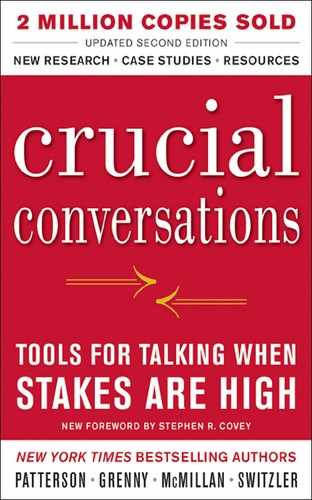The Four Methods of Decision Making
When you’re deciding how to decide, it helps to have a way of talking about the decision-making options available. There are four common ways of making decisions: command, consult, vote, and consensus. These four options represent increasing degrees of involvement. Increased involvement, of course, brings the benefit of increased commitment along with the curse of decreased decision-making efficiency. Savvy people choose from among these four methods of decision making the one that best suits their particular circumstances.
Command
Let’s start with decisions that are made with no involvement whatsoever. This happens in one of two ways. Either outside forces place demands on us (demands that leave us no wiggle room), or we turn decisions over to others and then follow their lead. We don’t care enough to be involved—let someone else do the work.
In the case of external forces, customers set prices, agencies mandate safety standards, and other governing bodies simply hand us demands. As much as employees like to think their bosses are sitting around making choices, for the most part they’re simply passing on the demands of the circumstances. These are command decisions. With command decisions, it’s not our job to decide what to do. It’s our job to decide how to make it work.
In the case of turning decisions over to others, we decide either that this is such a low-stakes issue that we don’t care enough to take part or that we completely trust the ability of the delegate to make the right decision. More involvement adds nothing. In strong teams and great relationships, many decisions are made by turning the final choice over to someone we trust to make a good decision. We don’t want to take the time ourselves and gladly turn the decision over to others.
Consult
Consulting is a process whereby decision makers invite others to influence them before they make their choice. You can consult with experts, a representative population, or even everyone who wants to offer an opinion. Consulting can be an efficient way of gaining ideas and support without bogging down the decision-making process. At least not too much. Wise leaders, parents, and even couples frequently make decisions in this way. They gather ideas, evaluate options, make a choice, and then inform the broader population.
Vote
Voting is best suited to situations where efficiency is the highest value—and you’re selecting from a number of good options. Members of the team realize they may not get their first choice, but frankly they don’t want to waste time talking the issue to death. They may discuss options for a while and then call for a vote. When facing several decent options, voting is a great time saver but should never be used when team members don’t agree to support whatever decision is made. In these cases, consensus is required.
Consensus
This method can be both a great blessing and a frustrating curse. Consensus means you talk until everyone honestly agrees to one decision. This method can produce tremendous unity and high-quality decisions. If misapplied, it can also be a horrible waste of time. It should only be used with (1) high-stakes and complex issues or (2) issues where everyone absolutely must support the final choice.
